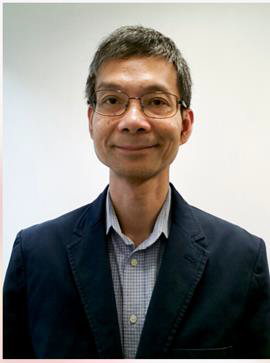
报告人:Shu Kong SO 教授
香港浸会大学物理系主任
时间:2019年4月17日 下午3:30
地点:知新楼C座量子报告厅
邀请人:郝晓涛 教授
报告摘要:
A bi-continuous thin film network of a light absorbing polymer and an electron acceptor constitutes the active layer in a bulk heterojunction (BHJ) organic solar cell. In such a BHJ, the compositions of the polymer donor (D) and the electron acceptor (A) should be optimized for balancing charge transport and achieving the highest power conversion efficiency. In this talk, we focus on electron transport and systematically study how electrons achieve percolation pathways in a BHJ as the weight fraction of the electron acceptor is altered. Three different classes of BHJs are explored: BHJs that contain (1) fullerene-based acceptors, (2) non-fullerene small molecules, and (3) polymer acceptors. The nano-topologies of acceptors in (1) to (3) can be approximately associated with spheres, oblates (plates) and prolates (long rods), respectively. We discover that the weight fraction of the acceptor for electron percolation to complete is successively reduced in the order of fullerenes (0.32), non-fullerene (NF) small molecules (0.25), and polymers (0.11). A new parameter, namely, the effective volume fraction,  , is introduced to quantify the fraction of the acceptor moieties that can contribute to electron transport in the BHJs. The electron percolation regions can be fitted with a model that considers the shapes of the acceptors and their
, is introduced to quantify the fraction of the acceptor moieties that can contribute to electron transport in the BHJs. The electron percolation regions can be fitted with a model that considers the shapes of the acceptors and their  in the BHJs. An all-polymer BHJ containing PTB7-Th:N2200 exhibits the largest
in the BHJs. An all-polymer BHJ containing PTB7-Th:N2200 exhibits the largest  (0.6-0.8), indicating that N2200 is the most well-mixed with the donor polymer PTB7-Th. Due to more uniform mixing, we expect all-polymer BHJs can better preserve their electron transport capability arising from composition variations, and they are immuned from the introduction of inert materials or the exposure of moisture, in stark contrast to fullerene-based BHJs. Our results correlate the electron transport behaviors to the nano-topologies of acceptors for BHJ cells, and offer guidance to tune the compositions and understand the nano-morphology of BHJ cells using different classes of acceptors.
(0.6-0.8), indicating that N2200 is the most well-mixed with the donor polymer PTB7-Th. Due to more uniform mixing, we expect all-polymer BHJs can better preserve their electron transport capability arising from composition variations, and they are immuned from the introduction of inert materials or the exposure of moisture, in stark contrast to fullerene-based BHJs. Our results correlate the electron transport behaviors to the nano-topologies of acceptors for BHJ cells, and offer guidance to tune the compositions and understand the nano-morphology of BHJ cells using different classes of acceptors.
个人简介:
Shu K SO obtained his bachelor degree from Hamilton College and PhD in Physics from Cornell University. In Cornell, he did research on surface physics and chemistry of small molecules on metal and semiconductor surfaces. He was a postdoctoral fellow in the Chemistry Department of the University of Toronto where he used scanning tunneling microscope to study surface photochemistry. In 1992, he joined the Department of Physics, Hong Kong Baptist University. He is now the Acting Head and a Professor of Physics, and is heading the Department in the focused research areas in advanced materials and in biological physics. His major research interest is in the physics and the chemistry of thin film materials including transport and defect study of organic films, fabrication of organic solar cells and thin film transistors, surface and optical spectroscopies of materials, and pulsed laser deposition. He has made notable contributions to the carrier transport study of organic and polymeric thin films for OLEDs and OPV applications, and the study of defects in organic semiconductors and perovskite materials. His recent interests are in the niche applications of OPV cells in, e.g., for indoor light harvesting.
